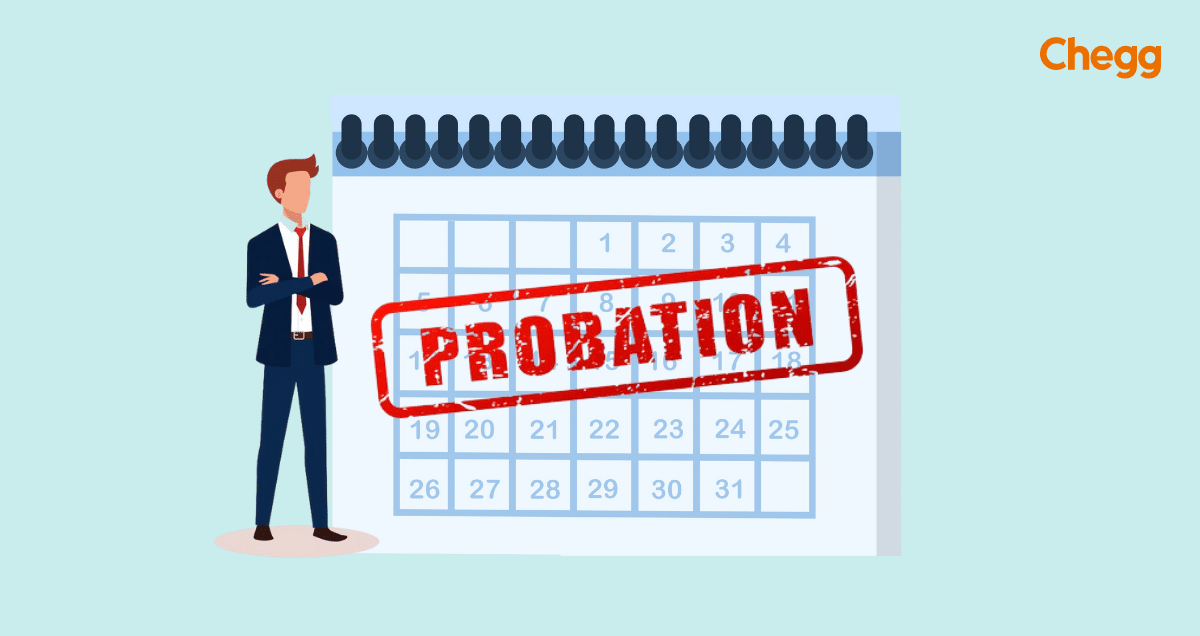Improve your Vocabulary Understanding Figure of Speech
Introduction If one wishes to improve their caliber of English, one should read this blog. An excellent method to improve one’s spoken and written English is to become familiar with various figures of speech and how to apply them.

Introduction
If one wishes to improve their caliber of English, one should read this blog. An excellent method to improve one’s spoken and written English is to become familiar with various figures of speech and how to apply them. Scroll down to find out more and see some figures of speech in action!
Let’s dive into this article by Chegg on Figure of Speech and get going!
What do you mean by Figure of Speech?
A term with an implicit meaning that shouldn’t be taken at face value is known as a figure of speech. This indicates that a phrase’s literal meaning is not its true meaning.
Since the majority of figures of speech are frequently employed in everyday discourse, native English speakers are highly familiar with them. However, if one doesn’t speak English as their first language or if one does and wants to learn more about it, this is the perfect place!
The Oxford Learner’s Dictionary defines ‘Figures of Speech’ as “a word or phrase used differently from its usual meaning to create a particular mental picture or effect.” Traditionally, these devices have been known to people as poetic devices to analyze the poem.
The figures of speech examples in English would thus be a way of describing more in English but without literally saying it out loud. Thus, using figures of speech with examples, one can speak highly significant phrases and add liveliness, and beauty to speech. One may call them the “ornaments of speech.”
Some of the examples would be similes, metaphors, images, symbols, and personification which will be discussed in the article.
Importance of Figures of Speech
“Sweet are the uses of adversity,
Which, like the toad, ugly and venomous,
Wears yet a precious jewel in his head”. (Shakespeare, As You Like It)
One might have come across these readings. But has one wondered which figures of speech have been used by Shakespeare? Let’s dig deeper to understand the importance of several types of Figures of Speech With Examples.
- Figures of speech within a written text can be used in English speaking to explain something in a more artistic sense. It can be in a more beautiful way or even rhetoric or witty!
- They are usually used to compare something, be it a living or non-living object, feeling, etc., which gives advice or creates a less literal description of the examples above.
- They are used to describe a feeling in a nonliteral way with full attention to the phrase or a particular word which is the figure of speech.
- They provide freshness of expression and clarity of meaning. They also increase our vocabulary skills.
- The figures of speech with examples enhance the beauty of the writing by giving it a broader meaning while also increasing the reader’s creativity, thereby resonating with the witty or subtle meanings that the writer indicates. It shows the writer’s thoughts and the translator’s mastery of the language.
Also Read: Importance of Life Skills in Professional Life
Types of Figures of Speech with Examples
Here are the 16 kinds of figures of speech with examples:
- Personification
- Metaphor
- Simile
- Alliteration
- Hyperbole
- Onomatopoeia
- Euphemism
- Irony
- Anaphora
- Apostrophe
- Pun
- Paradox
- Oxymoron
- Metonymy
- Assonance
- Understatement
- Personification – This figure of speech represents a noun or abstraction as a human form. For such identification or given attribute, it creates a language that helps readers feel more connected to what’s going on in the story or makes passages or ideas more memorable. For example -” The moon methinks looks with a watery eye; And when she weeps, weeps every little flower, Lamenting some enforced chastity.” “The ocean roared.”
- Metaphor – This figure of speech compares two things that have something in It is often confused with a simile. It is an informal or implied simile in which the words ‘like,’ ‘as,’ and ‘so’ are not used. For example, “He is like a lion (Simile) “and “He is a lion (metaphor)”. “The eyes are the window to the soul.”
- Simile-This figure of speech is one of the widely used figures of speech in poems and verses. It is used to make a comparison between two things using the words using words – “like” or “as.”In a simile, two, unlike things, are explicitly compared. For example ‘she shone as bright as the sun”. “She is like a fairy.”
- Alliteration – Alliterationuses repeated letter sounds throughout a sentence. One can easily discover it by noting the repetition of an initial consonant sound. For example – ‘the high horse hopped along the highway.’” The mass of men lead lives of quiet desperation.” (Henry David Thoreau, Walden)
- Hyperbole – This figure of speech is about the literal exaggeration used to convey a deeper meaning. Sometimes they are also statements that are emphasized as and by an overstatement or an extravagant situation indicated. For example, ‘I have a thousand things to do this morning.” “Virtues as the sands of the shore.” “These books weigh a ton.”
- Onomatopoeia -This figure of speech mainly focuses on individual words. These words resemble the sound they are describing. For example, ‘the car alarm went beep.’ “I can hear the buzzing of the bees.”
- Euphemism – By using a euphemism, we speak in agreeable and favorable terms of some person, object, or event ordinarily considered unpleasant and disagreeable. For example, • He is telling us things as though they were a fairy tale! (a lie) • And now, the Queen has embraced eternal sleep. (death)
- Irony – This is a figure of speech used to share a feeling or emotion. This usage is the opposite of what is meant; for example, ‘I love it when I drop my phone, how wonderful.
- Anaphora – Ever consciously wondered why one repeats words in the same sentences they speak? Anaphora is the figure of speech that is the repetition of the same word or phrase at the beginning of a sentence or paragraph. For figures of speech examples: “Unfortunately, I was in the wrong place at the wrong time on the wrong day.” “You are not getting well, now are you?”
- Apostrophe – This figure of speech is a direct address to some inanimate thing or some abstract idea as if it were a living person or some absent person as if it were present. For example, “The woman loved her cat like her own child.” “My poor car has broken down!”
- Pun – One of the most interesting figures of speech is a pun. It is also very witty as it entails a play on words. For example – ‘A boiled egg for breakfast is hard to beat.’ “I’ve been to the dentist many times, so I know the drill.”
- Paradox -As a figure of speech, the paradox is a statement that seems contradictory but underlines a greater meaning upon further reflection. This literary device is used to engage a reader to discover an underlying meaning in a brutally conflicting statement. Example – “Pen is mightier than the sword.” “Change is the only constant.”
- Oxymoron – The figure of speech uses a two-word phrase where the words contradict one another to give a positive meaning. Example – “The is pretty ugly.” “You look awfully pretty in that dress.”
- Metonymy– Metonymy is an interesting figure of speech that is highly used in psychoanalysis. Metonymy means a change of name or the transference towards a thing that is closely associated with the previous subject referred to. It is a substitute for an object or idea for the actual name of the thing indicated. It involves a word or phrase substituting for another word or phrase. Example – “The pen is mightier than the sword.” The ‘crown’ refers to the British Royal Family.
- Assonance – TheCambridge Dictionary defines assonance as “the similarity in sound between two syllables that are close together, created by the same vowels but different consonants.” They are not rhyming words. The attention is on the syllables and vowels used at the beginning, middle, or end of a sentence. Example -A” rolling stone gathers no moss.” and “Old age should burn and rave at close of day; Rage, rage, against the dying of the light” from the poem by Dylan Thomas.
- Understatement -An understatement is a figure of speech used by authors or in speeches to deliberately make a situation seem less important than it is. It is similar to that of irony since the level of the response is highly downstate to exaggerated examples, the meaning, or the impact of the statement. Example – “It is not that big of a deal; I only have to undergo a small open heart surgery.” “It’s okay not to feel very overwhelmed now that your dog has died.”
Lesser-known Figures of Speech
The Figures Of Speech Class 10 syllabus also has the following lesser-known figures of speech:
- Synecdoche – This figure of speech comes from the Greek word “synekdochē,” meaning “to sense.” Synecdoche is the understanding of one thing utilizing another. Here, a part is used to designate the whole or the whole to represent a part. For example, “I have the Viceroy, love the man.” and “All hands (crew) at work.” “Today, I am posting on Facebook about how useless Facebook is.”
- Epigram – This figure of speech is a short saying. With a sharp difference from Litotes, it also has words that contradict each other. The language of the epigram is remarkable for its clarity and brevity. They are often very witty, funny, and memorable and showcase exciting ideas about a life situation, person, emotion, or idea. Often they are also rhyming words with a very catchy sequence. Examples – The child is the father of the man. (Wordsworth) “Fools rush in where angels fear to tread.” One of the very famous examples of a figure of speech is ST Coleridge’s poem titled “Epigram”:
“Sir, I admit your general rule,
That every poet is a fool,
But you may serve to show it,
That every fool is not a poet”.
- Litotes – This figure of speech is commonly used in novels, plays, and poems. It has a resemblance to understatement, where the author uses a negative word or idea, or concept which is not meant to be taken literally to express the opposite idea. Sounds difficult? Let’s look at an example – “Love’s not Time’s fool, though rosy lips and cheeks. Within his bending sickle’s compass come” (Shakespeare). Can you see the contradiction and the truth here?
- Circumlocution – This figure of speech consists of expressing some facts or desires in an indirect but repetitive way instead of stating it at once. It occurs when a writer is not clear enough in what they want to say. Their descriptions may be sarcastic and uncertain. Some elements of circumlocution include the author’s inability to find the right words to say something. Sometimes even in speeches, they try to avoid using offensive words or not follow the rules in poetry writing. Example- “The viewless couriers of the air.” “That statement of his was purely an effort of imagination.”
- Pleonasm – Pleonasm or tautology means repeating the same fact or idea in different words. Sometimes it is used to indicate a word or phrase which is cliched, but a pleonasm can also be simply a rhetorical word or phrase. They are widely used as literary devices in poems and prose. It is when an author uses synonymous terms at once or in one sentence to narrate an idea, etc. Syntactic pleonasm is when one uses unnecessary functional words that can be done away with, especially while speaking. “That” is a typical example. Example – “It is the privilege and birthright of every man to own fundamental rights as a citizen.”I ate a tuna fish sandwich.” Another famous example of all figures of speech would be that of Hamlet.
“I will be brief: your noble son is mad.
Mad call I it, for, to define true madness,
What is ’t but to be nothing else but mad?”
How to Write a Figure of Speech
- Figures of speech are ways to express one’s feelings and thoughts by giving the words used more force. It is a form of rhetorical speech that makes use of words in unusual ways. In plainer terms, figures of speech are employed to give additional color and intrigue to attract readers or listeners.
- Drawing or picture is one definition of the word “figure.” The reader or listener is given images using figurative language. Compared to just words, these images help express the information more quickly and vividly. It deepens the meaning of the text and makes the reader wonder. It gives the writer’s words more vitality. The use of figures of speech not only reveals the author’s intention but also explains why he chose certain words. It gives the text flavor and greatly improves the reader’s enjoyment.
- In “figurative language,” we employ figures of speech to add color and interest as well as to spark the imagination. Everyday conversation, popular music, television ads, and classic literature like Shakespeare and the Bible all use figurative language. The reader or listener is forced to utilize their imagination and comprehends much more than they would have otherwise.
- Literal language is the antithesis of figurative language. Literal expressions mean exactly what they say. Figurative language typically means more and differs from what it appears to mean:
He moved quickly while running. He took off running. (figurative)
“Like the wind” is a figure of speech in the example above (in this case, a simile).
Understanding the distinction between literal and metaphorical language is crucial. There are a lot of regularly used types of figures of speech with examples that one can memorize. Occasionally, authors and speakers may create their figures of speech. It will be challenging for one to comprehend the language if one fails to recognize it as a figure of speech in English and take it literally.
Learning Figure of Speech in English Vocabulary
A word or phrase with a secondary meaning to its literal definition is known as a figure of speech. It might be a simile or metaphor intended to draw comparisons. To create a powerful impact or impression, it may be necessary to use alliteration repeatedly or to exaggerate hyperbole. These literary devices are abundant in the English language.
Poetry and literature both benefit greatly from figures of speech. They are also influential in speeches and movie dialogue. These tools are present in almost every aspect of life.
One must realize that knowledge of English grammar is necessary to use the language fully. Therefore, one must concentrate and emphasize studying all grammar fundamentals if one wants to develop and increase their ability to communicate in English. Consider signing up for an online English tutoring course that will offer expert assistance and instruction.
Keep interested and attention level high during the study of English grammar. This will help to identify and distinguish between figures of speech with comfort and also boost confidence.
Explore more about Life Skills for success.
Frequently Asked Questions
Q1. What is a figure of speech?
Ans. A figure of speech is a literary device that is used to create an atmosphere or to emphasize a point in a story. For instance, “as the saying goes” is a common figure of speech that means something like “in other words.” It can also be used to introduce an explanation for what you said.
Q2. What are the different figures of speech in English?
Ans. There are four basic figures of speech:
Metaphor: a figure of speech that compares one thing to another without using words. For example, “It was like watching paint dry” would be an example of a metaphor.
Simile: a figure of speech that compares two things by using the words like or as. For example, “The walls were white like snow” would be an example of a simile.
Hyperbole: exaggerating the truth. For example, “I’m so hungry I could eat a horse” would be an example of hyperbole.
Alliteration: repeated sounds or letters at the beginning or end of words that create a rhythm and sound pleasant to read aloud and hear spoken aloud (examples include: “mistakes”, and “masterpiece”).
Q3. What are Figure of Speech Examples?
Ans. Figure of speech examples are a great way to learn how to use figurative language. They can help one understand how words can be used in different ways, and they allow one to practice them.
While reading something, it’s easy to look at the words one by one as one reads. But if one doesn’t have a good idea of what they mean or how they’re used, it’s harder to understand.
Q4. Is Figure of Speech necessary for English?
Ans. Yes, it is. The figure of speech is used to make the language exciting and fun to read. The figures of speech are very useful in writing, as they help one to improve vocabulary understanding, which is one of the most important skills in English.
The figure of speech can be used in writing any kind of text, speaking, or reading, either for business or for pleasure. It is one of the most common elements that exist in the English language.
The post Improve your Vocabulary Understanding Figure of Speech appeared first on Chegg India.



























